August 2024 Core Update: Ad-Driven Sites and Traffic Loss
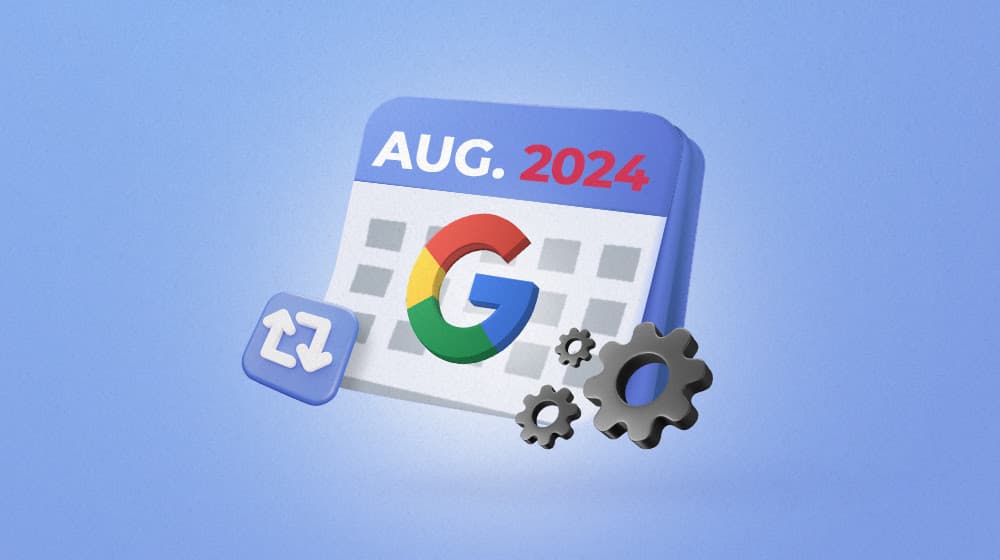
Google updates range in scope from "affects a few spam sites and makes some other sites wobble in the rankings" all the way up to "a really big deal that changes the face of the internet as we know it."
Usually, the former are just called a core update, and the latter are given major names like Panda or Penguin.
The recent August 2024 core update, despite being "just" a core update, seems to be having broader repercussions across many industries within a certain subset of sites. One thing in particular that we've noticed, as well as many others on Reddit and SEO forums: sites that run ads (think networks like Mediavine) were hit more than sites that don't run ads.
What did Google do, who is affected, and how can you recover if you've been hit?
Let's talk about it.
What Google Says About the August 2024 Core Update
First, before we get into analysis and repercussions, let's see what Google says directly about its core update.

First, we have the post from the search central blog:
"This update is designed to continue our work to improve the quality of our search results by showing more content that people find genuinely useful and less content that feels like it was made just to perform well on Search."
Well, that's generic, right?
Unfortunately, the rest of their post isn't much better. They say it "takes into account the feedback we've heard from some creators and others over the past few months," but they don't specify what they've done or changed, what they've targeted, or (god forbid) a list of changes.
They do say it's an update aimed at promoting original, unique content, even from small and independent sites. They also say the update worked to better capture improvements sites made to adjust to the last major core update.
What Actually Happened in the August 2024 Core Update
It's impossible to say what changed in the Google algorithm for the core update, but we can look at the kinds of sites that have gone up or down in the rankings, gained or lost traffic, and make some assumptions.

To start with, Barry Schwartz ran a poll on Search Engine Land with these results:
- 44%, or 1,583 people, said their rankings and traffic decreased.
- 27%, or 993 people, said their rankings and traffic increased.
- 29%, or 1,038 people, said their rankings and traffic didn't change.
One important note to anyone looking at their own traffic is to disregard anything that happened in the first four days of August. Google had a known bug in their system that took several days to fix, so those first four or so days don't reflect what was actually meant to happen or what your current position or trends are. Right now, here in September, the last ~month of movement should be more reflective of reality.
For the most part, while Google claims that they took into account the actions taken by sites that were previously demoted, relatively few of those sites actually recovered. For the most part, it seems that smaller domains were more heavily penalized, and larger domains gained more share of the search results.
Google also mentions that if you've been hit by a core update, you can take action to recover, but chances are you won't see much positive movement until another core update, if at all. All of the interim updates are generally smaller and more focused on things like niche kinds of spam or nuking a newly discovered PBN, not broad-scale readjustments and re-evaluations.
Reports from the SEO community like this one showcase the perspective of site owners who are hit by these updates and lose most or all of their traffic. There's talk of shadowbans and classifications that effectively put a flag on a domain saying it's no longer valuable but without any sort of manual action that can be recovered.
While there's not a lot of useful information in this kind of conspiracy thinking (there's no evidence that Google "shadowbans" are real), there are some interesting tidbits. For example, several core updates ago, during the helpful content updates, it was general interest blogs that got hit. Later in the March update it seemed to focus more heavily on travel sites. August seems to have hit a lot of food blogs.
Do I think Google is targeting specific niches? Not necessarily. My suspicion is that they're going through and targeting specific kinds of strategies, both in terms of content production and monetization, and hitting those strategies. It just so happens that different strategies are more common on different kinds of sites.
What I've Noticed About Google's Recent Core Updates
I want to give my perspective here. As a content marketing agency that works with dozens of clients across nearly every possible niche – from high-end YMYL sites to general-interest blogs – I like to think I have a kind of top-down perspective on what's happening, though obviously, there's only so much I can see.
The sites have formulaic content.
This is a big one. The content on these sites tends to be very formulaic, almost templated in design.
Things like "The Best Vacation Itinerary in Fresno," "The Best Vacation Itinerary in Akron," "The Best Vacation Itinerary in Boise," and so on. The posts might as well be generated out of a template.
In fact, I suspect that may even be what's happening for a lot of this content.
If you remember back a couple of decades ago, when the internet was heavily keyword-driven, you'd see a ton of posts that were identical, except a handful of local keywords were changed out, usually by a regional or national brand that wanted local content. It's the same idea.
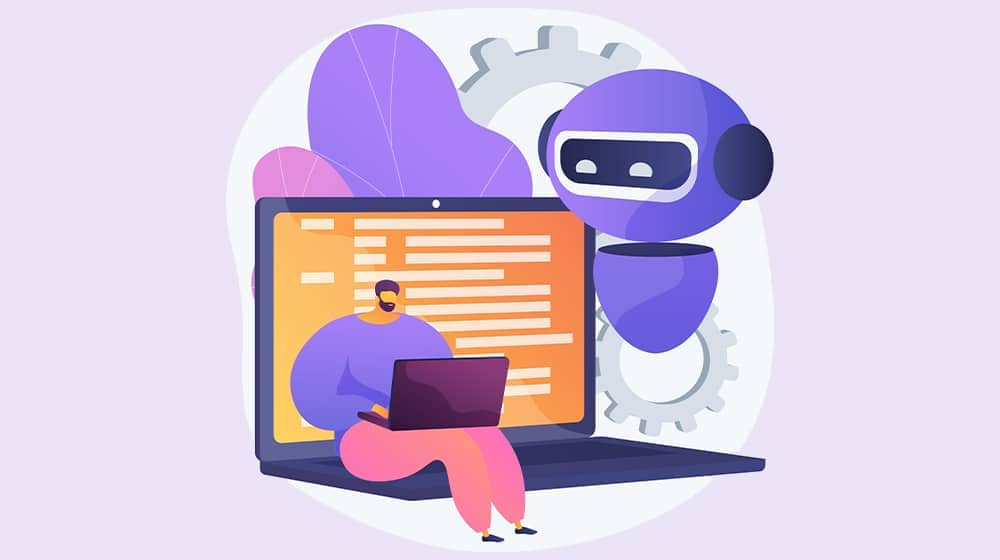
This may also be an anti-AI measure. A lot of content-producing AI systems like Jasper and its ilk use "workflows," which are iterative prompts meant to guide you through using AI to generate content. But if you generate hundreds or thousands of posts using the same handful of workflows, they're all going to be essentially templated because that's what a workflow is.
Generally this content sucks anyway - and Google knows it.
The sites are blog-heavy or exclusively blog content.
I've noticed that a lot of the sites most heavily hit are sites that rely 100% on their content.
They aren't blogs that have stores on the site, or blogs that build a personal brand for someone to sell their consulting, or businesses that run blogs to promote their main offering. They're blogs that exist to be blogs, content that exists to be monetized, and not much more.

I believe the assumption here is that if you're a person who decided to make a living through blogging, you don't necessarily have the expertise or the background to be a true authority. Conversely, a brand that is established in a niche can benefit from a blog that showcases their expertise, or a thought leader who has a proven record can leverage that to build their site.
The sites grew very quickly.
In many cases, the sites that got hit were sites that grew up out of nowhere very quickly. Usually, they're less than 2-3 years old, but they've managed to grow exceptionally well in that time.

While this kind of success is possible in rare circumstances, such as a novel new product or business hitting the market, it much more often means someone knows what they're doing in the SEO department. Sometimes it's innocent and the webmaster just got lucky - other times, the webmaster was doing something unsavory to grow that fast.
It might mean they just hammered a site with dozens or hundreds of posts per week, or it might mean that they're buying links or some other metric in the background. I've seen all of these scenarios.
I will say that it's not always brand-new sites that get hit. You could also see this from older domains that were dormant for a long time but exploded onto the scene relatively quickly.
Either way, it's the same story.
The sites had little or no off-site presence.
A lot of these sites are just that: a single site, self-contained. The authors don't go out and do outreach, guest post on other sites, work for other brands, or have any authority or trust they carry with them.
Someone like Brian Dean (founder of Backlinko) would have no trouble building a new site and getting it to rank well because he has a ton of authority. A comparative no-name would have a much harder time because they don't have a personal brand or reputation to leverage.
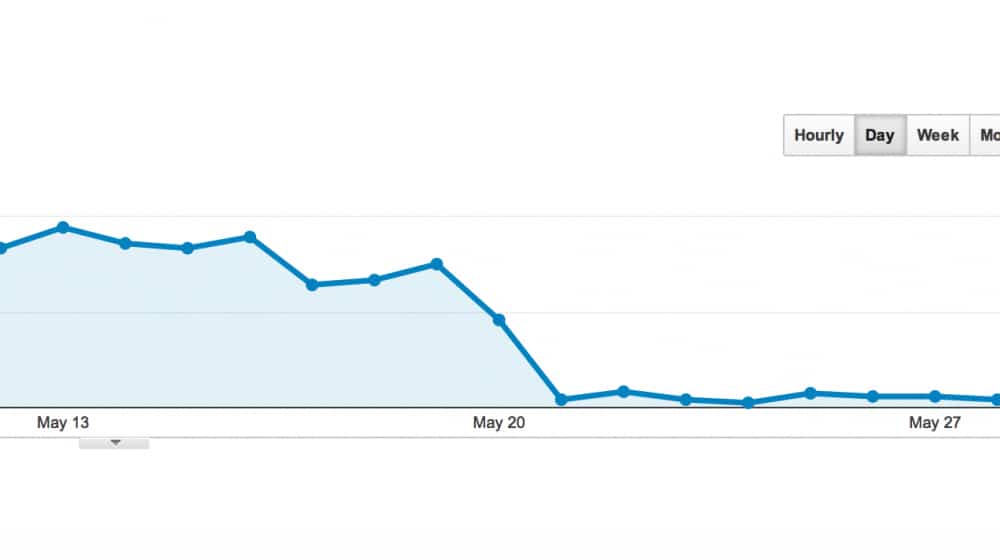
Unfortunately, this is one of the worst impacts of the core updates because it makes the internet more of an exclusive club. If you don't already have existing success, you'll find it much more difficult to build that success; meanwhile, the "rich get richer," and the people who already succeeded – even if they did so from scratch years ago – are given the golden treatment to keep going.
The sites tend to have a lot of ad placements.
This is one of the biggest elements of what I've seen; the sites hit by the last few core updates tend to be very heavily laced with advertising.
There are two aspects to this.
The first is the sheer number of ads on a page. Google has their official 30% ad density rules, and there's definitely such a thing as too many ads, though you can find counterexamples all over that have enough SEO power in other ways to overcome the penalties.

The other and more insidious aspect is the choice of ad network. I've found that a lot of the sites that are hit by these core updates are using certain specific ad networks, like Mediavine and Raptive, which are known for encouraging a lot of lower-value ads on their publisher sites.
I wrote a deeper dive into this after the last core update, which you can read here.
A couple of the other elements these sites had in common may be relevant, or they may not.
First, they tend to be WordPress sites. This isn't really that meaningful, though. Most non-WordPress sites are already having trouble ranking due to inherent limitations on their platforms or have no trouble ranking because the sheer investment in a custom design through Ruby or Joomla or whatever is just part of the process.

Second, they tend to have a few hundred pages of content. Sites with less content could still roll file, though they probably aren't drawing in a million hits a month or anything. Sites with a lot more content tend to be insulated from all but the most extreme or targeted changes. There are a lot of big websites that could be classified as "too big to fail" at this point, after all.
Finally, most of these sites seem to lose 80-95% of their traffic. They don't lose 100% of their traffic – they aren't deindexed or completely nuked – but these hits are never minor.
If the hammer lands, it lands hard.
How to Recover From (Or Avoid) Core Updates Going Forward
First of all, recovery from a core update is quite difficult. It's not impossible, but it takes a lot of serious effort, and a lot of the site owners who get hit by the core updates are unfortunately in precarious positions where the loss of income means they don't have the ability to invest in the effort necessary to recover.
It's an unfortunate side effect of being wholly reliant on Google.
Thus, prevention is better than recovery. If you can take steps now, before you're hit by a core update, you can work to insulate yourself from the impacts of said updates and avoid being hit in the future.

Either way, the actions you need to take are basically the same, so let's go through them. I also have a whole post dedicated to this if you want more information.
Determine if your site is at risk.
The first thing to do is check if your site is likely to be at risk.

In my view, that means one or more of these ingredients (in order of importance):
- Monetized through display ads on Mediavine or Raptive.
- Relatively new (no more than 2-3 years since you started growing it.)
- Generally formulaic, AI-generated, or generic content.
- Very blog heavy site (no content diversificaiton.)
- WordPress, possibly with a free or paid template (not a hand-made site).
- Rapid expansion of content.
- Very few trust pages.
- Using outbound affiliate links to generate revenue.
- Small backlink profile and lower authority site.
- Poor EEAT (no author profile or name, credentials, etc).
- Poor site structure.
This is by no means the only way a site can be hit, but it's the most consistent I've seen. These are patterns.
- If you only meet one or two of these, I'd get to work, but I wouldn't panic.
- If you meet all of them, imagine some red lights and sirens blaring, and buckle down ASAP. You may have already been penalized.
And, of course, if you've already been hit, you can skip this step.
Review your monetization method.
Almost all of the sites that I see hit by these core updates are sites monetized solely through display ads, often with a relatively high saturation or ad density, and often through a network like Mediavine or Raptive.
I'm not saying these ad networks are poison – I'm sure there are plenty of sites using them to good effect – but you should definitely reconsider if you rely too heavily on them.

My recommendation would be to dial back on the number of display ads you use, or scrap them altogether if you can, and work on another method of monetization. Consider:
- Selling your services or consulting.
- Building a product or eBook to sell.
- Developing a quick online service to sell.
- Working in affiliate links.
Unfortunately, this is one of the hardest steps, because sacrificing your monetization puts you in a precarious position unless you have external funding. That is, however, another option; set up a Patreon, or get a day job or other side hustle to diversify, to insulate yourself.
Perform an in-depth and objective content audit.
A deep dive into your content is critical. I have a guide to performing a content audit here, but I have a few things to add to it in the specific context of core updates, so I'll give you a rundown here.
Basically, you need to make a list of all of your content. Write down what their titles are, what the core keywords are, what the goal of the post is, and other general metrics.
Things like word count, how recently it was published, if it was updated, and its search rankings for given keywords are also important.

Your goal is to look for content that is:
- Very generic and has no real value beyond regurgitating what other people have already said on the topic.
- Very formulaic and similar to other content you've published on other subjects.
- Very close to other ranking content on the same subject. Spun content, copied content, and content that is generated with an AI can all fit this bill too.
Remember, generative AI is trained on existing content and can't create new ideas, only regurgitate ones that already exist. If your whole site is based on AI-generated content, you're on thin ice.
Aggressively fix and improve content.
Once you've identified content that puts your site at risk, you need to do something about it.

You pretty much only have two options: make it better or get rid of it.
Making the content better means putting some work into giving the content unique value. What sets this content apart from other content written on the same subject? What do you bring to the table? Every piece of content needs something, and you need to provide that something.
It's pretty hard for me to give any more specific advice here since every blog will be in a different situation, but if you want to call me for a consultation, we can talk about your specific example.
Focus on building off-site value and EEAT metrics.
A huge reason why sites are hit so hard by core updates and find it so hard to recover is that they're basically like a stool that only has one leg. If that leg breaks, there's nothing holding them up. You need to add additional support, which means off-site value.
Guest posting, or even getting hired as a bylined writer on another site, can be a great start. Getting your name out there in a way that isn't just you posting your own press releases or content on hub pages, Medium, Substack, or something similar, is hugely important. Even something like Medium or Substack can help you build a personal brand, as long as you're not just copying the same content from your site.
You also want to do what you can, both in terms of technical SEO and in social proof, to build authority and trust in yourself and your brand on your site. There are a lot of different ways to do that, so feel free to research it as you can.

Once you've built up value outside of your domain, you can leverage that value to benefit your brand as a whole and make you less vulnerable to a sudden hit from a core update.
Any other questions? If so, feel free to leave them in the comments, or reach out to me to discuss them directly!




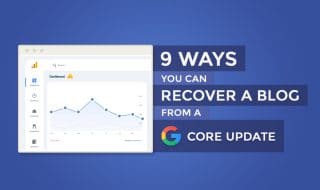


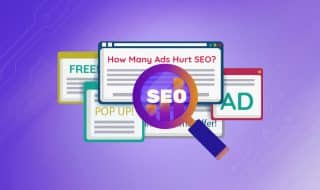


Comments